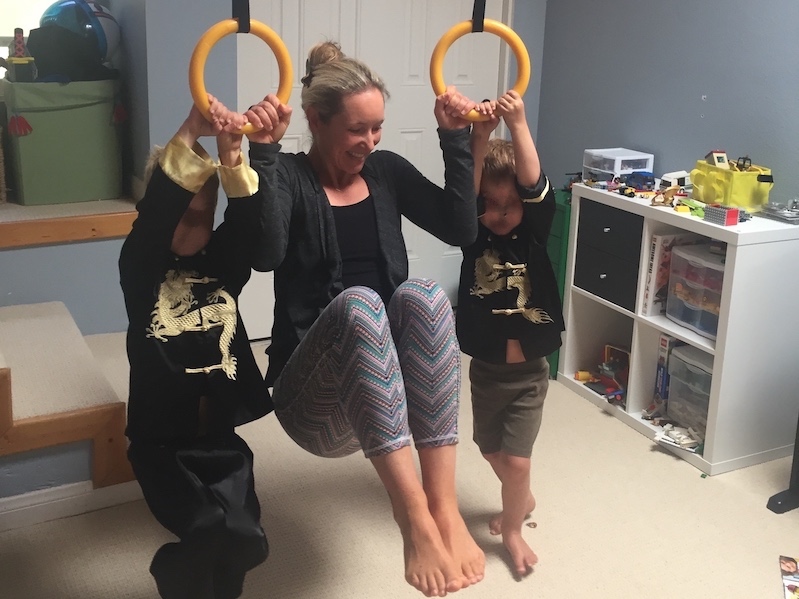Let’s face it. We all need to be moving more. Even if you go to the gym for an hour a day, and sit for the rest of the day, you are likely not giving your body and brain the movement it needs to be at optimal physical and mental health. Multiple studies show notable benefits of movement for anxiety, depression, and cognitive decline. Active people are less depressed, and experimental data shows that exercise may be as effective as antidepressants in reducing symptoms of depression.
The mental health benefits of exercise are due to multiple factors including:
- Increased blood volume to the brain
- Increased brain-derived neurotrophic factor (BDNF), which acts like fertilizer to your neurons
- Increased in hippocampal neuronal growth
- Normalized sleep
- Increased sense of accomplishment
- Increased social connection
- Increased nature connection
Despite all these benefits, many of us struggle to move more. We live in a sedentary society that outsources our movement (can you pass the remote control?) and our biology is designed for us to move less. Our brains evolved to reinforce us by expending as little energy as possible.
Modern psychology has some tools that will help you get moving, even when your brain and your couch are plotting against you. Step back from your unhelpful thoughts about exercise, tap into your values behind moving more, and take action with compassion for yourself that movement can be uncomfortable at times.
Here are 8 ways to use psychological flexibility and compassion to get you up and moving today:
- Clarify your movement values: Values are the deeper reasons why you want to move more. Sure, you know it’s good for you, but what is important to you personally about being more active? Do you want to move more because you care about treating your body with kindness? Or maybe you want to move more so that you can continue with valued activities like sports, being with family, or spending time in nature? How will being more active benefit you and those you love?
- Practice willingness: There are a number of inner obstacles that show up when it comes to moving more. Feelings like dread, shame, negative body image, and embarrassment are common barriers. You may also have memories of times when movement was challenging, or recall sensations of fatigue or physical discomfort. Make a list of your dreaded obstacles and hold that list in your right hand. Which of these obstacles could you solve, and which ones are you willing to accept as you continue to move your body? Imagine putting that list in a backpack and carrying it with you on your bike ride, hike, or swim.
- Defuse your unhelpful inner coach: Russ Haris once said that our minds can be the worst motivational speakers. What does your head say that derails you from movement and exercise? What rules, shoulds, and judgments do your mind tell you? Practice the ACT skill of cognitive defusion by putting a little space between you and these thoughts. Imagine these thoughts are coming from an unhelpful coach. What does its tone of voice sound like? Imagine putting that coach on the sidelines as you keep your focus on the road ahead, pointing to your values.
- Flexify your movement and break a rule on purpose. Our minds have a ton of “rules” when it comes to movement. Some of the ones I have heard in my practice include: It has to be 30 minutes or it doesn’t count. Walking my dog isn’t really exercise. I have to have the right clothes on to move. I have to be XXX pounds before I can go to an exercise class. Take a moment to consider your movement rules. Which ones are keeping you stuck? Choose one and break it this week.
- Choose a compassionate coach. Once you get moving, it’s helpful to have some support. The good news is that that support can come from you! If you had a motivating, encouraging, caring coach that said just the right things to help you keep moving, what would they say? What would their tone of voice sound like? Imagine this compassionate coach right alongside you as you get moving.
- Take committed action right now. We often put off movement to some delegated hour of the day. Instead of waiting for some future point to move, what if you took action toward movement right here and now? Could you stand up while you read this blog? Stretch your legs while you work? Walk on your next call? Take an eye break and move your eyes around in a clockwise direction? Do it. Remind yourself of your values while you do it to reinforce your action.
- Stack your life. This term comes from my favorite natural movement thought leader, Katy Bowman. Katy makes a distinction between movement and exercise. Humans have been moving for thousands of years as part of their work (chop wood, carry water). And we can choose to move more without having to exercise! Stack your life by incorporating more movement into your daily activities. Sit on the floor while working so you squat and lunge when you get up and down. Whip your own cream by hand. Husk your own corn. Look for all the ways you usually outsource your movement and choose the movement-rich option instead. And every time you do, savor the values you are pursuing a more mobile, flexible, and free life!

+ show Comments
- Hide Comments
add a comment